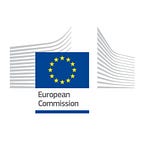What did COP26 achieve?
All eyes were on Glasgow over the past two weeks. Some 30,000 delegates representing over 200 countries descended on Scotland’s second city for 13 days of climate change negotiations at COP26, the UN Climate Change Conference. But what was it all for?
Keeping 1.5 alive
From the very start of the Conference, the name of the game was to cap global warming at 1.5°C by the end of this century. As it stands, the Earth is already around 1.1 degrees hotter than before the industrial revolution. The hope was that, if enough governments signed up to cut their greenhouse gas emissions further and faster, it would be possible to limit global warming to no more than another 0.4 degrees and avoid the worst impacts of uncontrolled climate change.
So did they succeed? The short answer is not just yet. But the good news is that substantial progress was made. In 2015, before the Paris Agreement was signed, we were on track for a temperature rise of 4°C by the end of the century. Two weeks ago, the best estimates put the figure at 2.7°C. Now, with the commitments made by governments and other major actors in Glasgow, we have edged closer to 2 degrees.
What else?
- Crunch time for coal
Despite pushback from China and India, COP26 did, for the very first time, agree to “phase down” the use of polluting coal for power generation and to stop subsidising inefficient fossil fuels. COP26 also recognised the need to support a just transition, leaving no one behind. - Writing the rulebook
Six years on from the Paris Agreement, COP26 completed the so-called Paris Rulebook. It means that all parties agreed on how to report their progress on emission reductions and the rules for running international carbon markets. - Keeping promises
Developed countries have not yet delivered the USD 100bn per year promised to support climate action in developing countries. At Glasgow these ‘donor countries’ provided reassurances of their commitment to deliver on the goal up until 2025, and agreed to at least double the money they provide to help developing countries become more resilient to the damaging effects of climate change by 2025. The EU currently provides its fair share, around USD 27 billion in 2020. - Climate solidarity
The climate crisis disproportionately impacts small island states and some of the world’s least developed countries. Many of these countries don’t have the means to adapt to more frequent and intense extreme weather, as well as sea-level rise and drought. These impacts can have huge costs, damaging infrastructure, jeopardising food security, and putting lives at risk. In Glasgow, countries agreed to strengthen the Santiago Network of agencies around the world that provide financial and technical assistance to countries already experiencing these impacts. The COP also agreed to begin discussions on how to meet the financial needs of those countries most affected by the climate crisis.
What’s next?
The ultimate test of Glasgow will be how quickly and effectively the new commitments can be translated from words into action. But one big difference compared to previous COPs is that most countries now support the goal of limiting global temperature rise to 1.5 degrees. It will be vital to maintain the momentum created in Glasgow to make these promises a reality.
What is the EU doing?
With the European Climate Law, the EU wrote into law its commitment to reaching climate neutrality (net-zero emissions) by 2050 and delivering at least -55% net greenhouse gas emissions by 2030. Ambitious Green Deal proposals on climate and energy reforms, tabled by the Commission last July, translate this vision into a plan.
At COP26, the EU also helped launch several important initiatives to tackle the climate crisis:
- The EU launched the €820 million EU Catalyst partnership, to help speed up the development of innovative technologies to deliver European Green Deal ambitions and the EU’s 2030 climate target.
- The Global Methane Pledge commits over 100 countries — representing almost half of methane emissions — to reduce global methane emissions by at least 30 percent by 2030. Like carbon dioxide, methane is a greenhouse gas, but its warming effect is much stronger. Compared to cutting CO2, reducing global methane emissions could be a quick win with more immediate effects because it dissipates from the atmosphere much more quickly.
- The EU committed to contributing €1 billion over five years to the Global Forests Finance Pledge to protect the world’s forests, and some 100 world leaders — representing around 85% of the world’s forests — promised to end and reverse deforestation by 2030
- Along with France, Germany, the UK and the USA, the EU launched a Just Energy Transition Partnership with South Africa to accelerate the decarbonisation of the country’s economy, with a focus on the electricity system.
But with the EU responsible for only 8% of global emissions, it’s time for others to act too. The EU is calling on all major emitters to follow through on their promises, go further, and deliver the highest possible level of ambition by the end of next year to lock in the goal of limiting temperature rise to 1.5°C. The EU will continue its efforts to bring more of its international partners on board to secure a safer, greener and prosperous future for us all.
